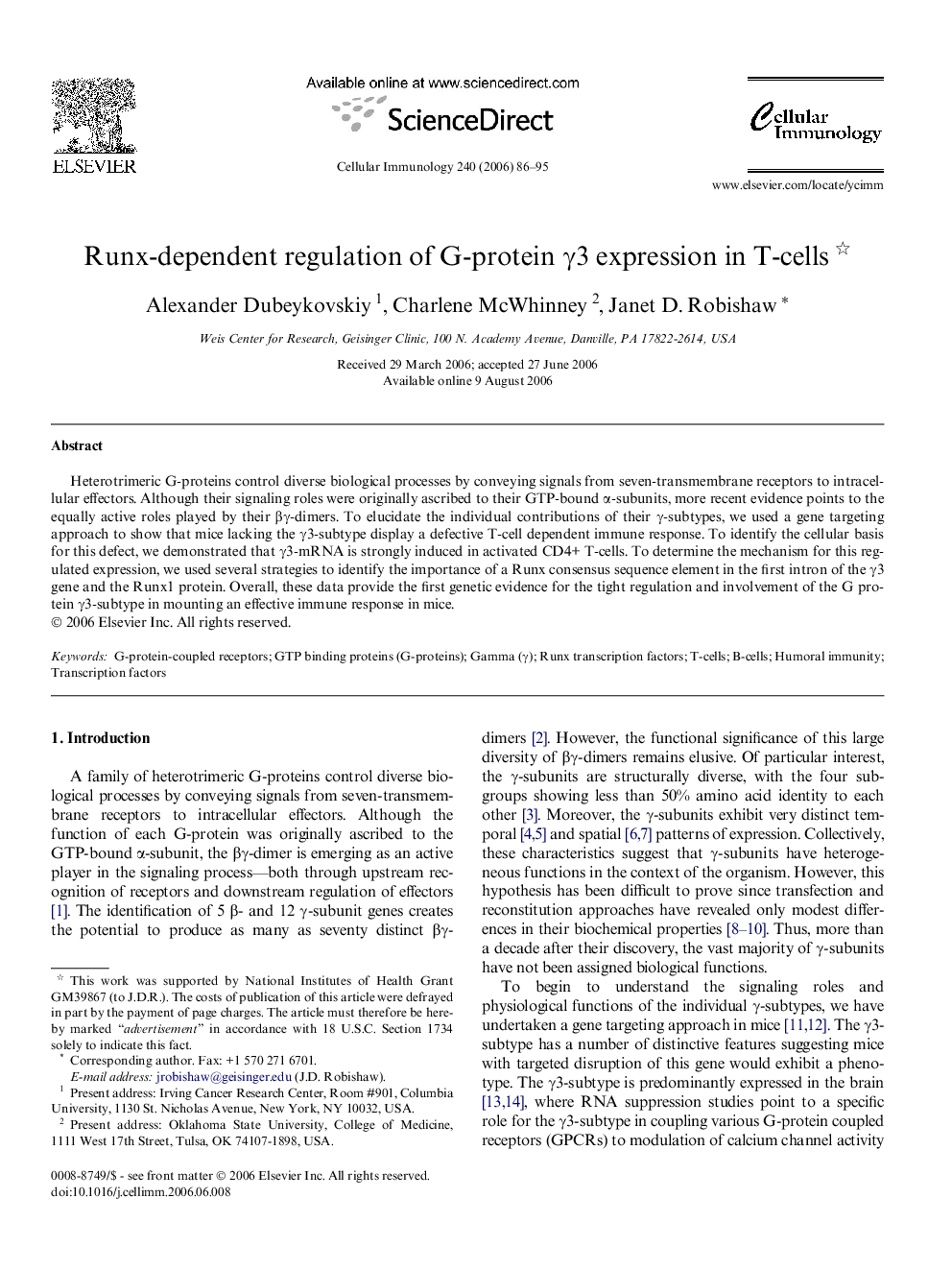| Article ID | Journal | Published Year | Pages | File Type |
|---|---|---|---|---|
| 2168205 | Cellular Immunology | 2006 | 10 Pages |
Heterotrimeric G-proteins control diverse biological processes by conveying signals from seven-transmembrane receptors to intracellular effectors. Although their signaling roles were originally ascribed to their GTP-bound α-subunits, more recent evidence points to the equally active roles played by their βγ-dimers. To elucidate the individual contributions of their γ-subtypes, we used a gene targeting approach to show that mice lacking the γ3-subtype display a defective T-cell dependent immune response. To identify the cellular basis for this defect, we demonstrated that γ3-mRNA is strongly induced in activated CD4+ T-cells. To determine the mechanism for this regulated expression, we used several strategies to identify the importance of a Runx consensus sequence element in the first intron of the γ3 gene and the Runx1 protein. Overall, these data provide the first genetic evidence for the tight regulation and involvement of the G protein γ3-subtype in mounting an effective immune response in mice.
